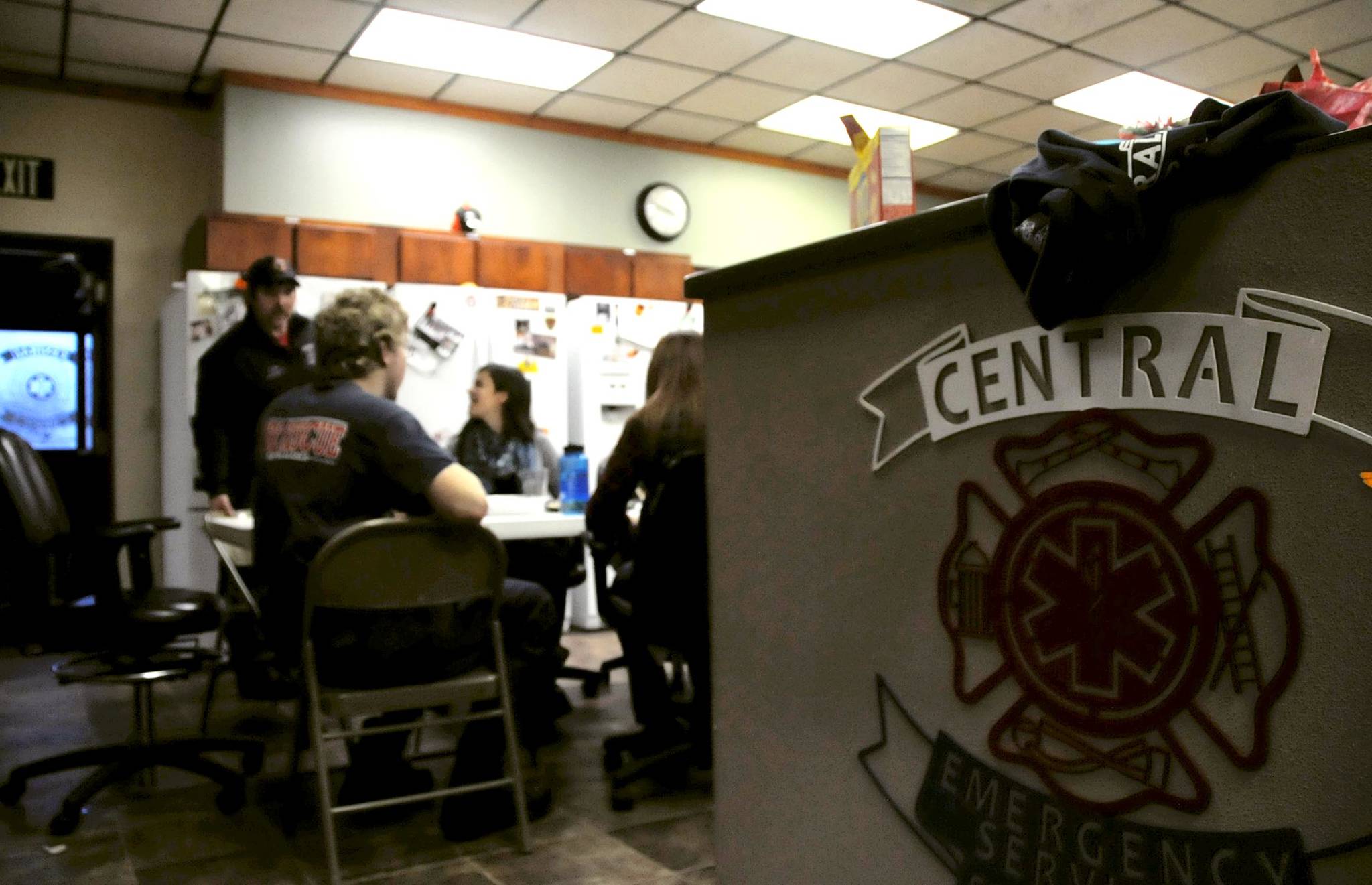The peninsula’s busiest emergency services department is looking to relocate its main fire station.
Central Emergency Services serves the majority of the Kenai Peninsula’s population, stretching between Jean Lake on the Sterling Highway outside Sterling down to Kasilof and across the Kalifornsky Beach area, including some of the homes at the end of Strawberry Road near Kenai and the outlying wildland areas of the central peninsula. Altogether, about 32,000 people live in the service area, not counting the wash of tourists that arrive in Kenai and Soldotna from May through September.
The central station in Soldotna, Station 1, was built in 1957 and was last updated in 1981. The service area is now looking for funds for a new main station. The project was identified as the service area’s number one priority in the Kenai Peninsula Borough’s capital improvement project priorities for 2018, a list approved by the Kenai Peninsula Borough Assembly at its Jan. 16 meeting.
“The current station and staging area has far exceeded useful life and operational capacity, with issues such as significant structural deficiencies, insufficient ADA compliance, minimal sleeping quarters per gender regulations, no fleet maintenance bays, and no secured property storage for water or snow rescue vehicles,” the project description in the priority listing states.
Right now, the station — situated on Binkley Street opposite the Safeway in Soldotna — shares land with the Soldotna Police Department on a tightly developed corner. There is no room for a maintenance building and the lot can get crowded, making it hard for CES staff to run drills and operations efficiently.
The proposed construction project, estimated to cost $11 million, would include buying a new piece of land, design and construction as well as furnishing and firefighting equipment. The new station would include more sleeping quarters, a training and conference room, living facilities and apparatus bays, according to the project description.
The service area has prioritized the new station in its last four capital project priority requests, said CES Fire Chief Roy Browning during the assembly’s Legislative Committee meeting Jan. 16.
“That station responds all the way down to Ciechanski, out on Strawberry Road through the City of Kenai, and approximately Mile 90 on the Sterling Highway down to Mile 105,” he said. “As CES expanded, the functions of that station become operationally deficient.”
Members of the service area board, service area leadership, members of the borough administration and the city of Soldotna met in a site selection committee to determine a possible location for a new fire station away from the current lot. Though they’re listing the project in a capital funding request that will be submitted to the state, the state has not granted many requests for capital funding in the last few years because of the ongoing budget crisis. CES would likely use funds out of the service area’s fund balance to purchase a site, but because it’s been a long time coming, the service area wants to secure some kind of funding and may ask the borough assembly to approve bonds for the funding, Browning said.
One of the thornier issues in relocating the station is fire insurance rates for nearby homes. The closer a home is to a fire station, the faster a response will be and thus the lower a fire insurance premium will be. In spring 2016, the Insurance Services Office upgraded the city of Soldotna’s fire safety rating, which can affect fire insurance premiums. Station 1 is the primary service for Soldotna, which does not have its own fire department.
It’s a double-edged sword — moving the station to a larger lot away from its current location could affect response times and fire insurance premiums, but the current lot isn’t large enough to meet all of the service area’s needs, said CES Service Area Board chair Jim Chambers. One of the issues was that the service area had to update its equipment to larger trucks to accommodate the taller buildings at the hospital and Kenai Peninsula College, which require more space, he said.
“There’s this big situation with the current station because we don’t have enough of a footprint there for them to facility as well as the personnel and the equipment because we’ve had to upgrade that equipment,” he said. “…We don’t have enough room to really store anything in a safe place.”
The CES station isn’t the only public safety project the assembly identified as a priority. Anchor Point Fire and Emergency Services, which covers the community of Anchor Point and out into Cook Inlet to reach potential operating space for oil and gas company Bluecrest Energy, is asking for a new apparatus housing facility. On its own, the service area has already purchased a seven-acre parcel and a gallon holding tank and is asking for funds to buid a facility to house the a water tank filling site and pumping system as well as a house fire apparatus, according to the capital project detail.
Anchor Point Fire and Emergency Services Chief Al Terry told the assembly that the addition of the station would improve fire insurance ratings for the area and increase fire safety for the residents.
“Even though it’s not a complete fire station, people in that area would get partial credit for their fire insurance ratings,” he said. “…(from Ninilchik to Homer) You would have a fire station or semi-fire station almost every ten miles up and down the Sterling Highway.”
The service area is asking for approximately $1.78 million in funding with a $150,000 local match, according to the funding request. The service area board contributed $100,000 last year and plans to chip in more this year, Terry said.
Reach Elizabeth Earl at elizabeth.earl@peninsulaclarion.com.

